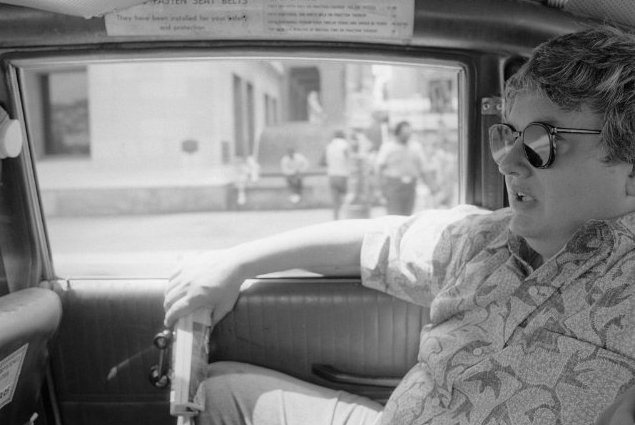Roger Ebert and Steve James both hail from Chicago, and Ebert was one of the most vocal champions of James’ gritty Oscar-nominated documentary, Hoop Dreams, in 1994.
But the two never became close until James began working on Life Itself, the documentary adaptation of the memoir by the famed film critic that inadvertently became a posthumous tribute following Ebert’s death in April 2013.
“I held him in high esteem, but I think I felt freed because we weren’t buddies,” James said during a recent phone interview. “For a memoir, it’s a pretty candid look at his own life, which I don’t think is easy. That told me that if he was willing to do this, he was willing to have it be a more well-rounded and complicated portrait of him. He did not want a puff piece.”
The idea for the film came to James from Oscar-winning screenwriter Steven Zaillian (Schindler’s List). After quickly reading Ebert’s memoir, James jumped on board, with Zaillian and Martin Scorsese as producers.
“The memoir is just a terrific book about a very surprising and interesting life,” James said. “Roger’s life was about more than just becoming a greatly significant film critic and cultural commentator. He was those things, but he also had such a rich and complicated and full life. There’s so many aspects to the story.”
The film probes the journalism career of its subject, who earned a Pulitzer Prize during a longtime stint at the Chicago Sun-Times. It also chronicles his personal life, including a bout with alcoholism, his marriage at age 50 that turned him into a middle-aged family man, and his embrace of social media when thyroid cancer rendered him mute and facially deformed in his final years.
Plus, of course, it includes an extended segment about his love-hate relationship with rival and friend Gene Siskel, with whom he co-hosted a syndicated television show for more than two decades that popularized and redefined film criticism.
Siskel died of a brain tumor in 1999, but his widow is one of the primary subjects interviewed by James, who talked to Ebert’s acquaintances and colleagues, and some notable names from the film industry both on and off camera. James based those choices in part on the book, which devoted full chapters to some of the most influential people in Ebert’s life. Some were famous; others weren’t.
“I used the memoir as a very important guide,” he said. “Roger made some deep friendships, but not many, and the ones he made, he held on to for decades.”
James began the project before Ebert’s death, and it features several sequences of Ebert in his hospital bed, where he’s determined to continue writing and seeing movies even as his health deteriorates.
“When he went into the hospital with a fractured hip, the sense from everyone was that it would just be a temporary thing — a few weeks and he’d be back home. I remember thinking that it would be good for us to have footage of him in a hospital setting,” James said. “The idea from the start, and it was inspired by the memoir, was to use his life in the present as a springboard to the past.”
James and Ebert’s doctors didn’t know, of course, that he would only be home for two days for the rest of his life. Suddenly, the filmmakers were forced to change course.
“I had hoped to capture his vibrancy, and his determination and work ethic, seeing him in his day-to-day life,” James said. “But there’s a greater gravity and poignancy to the fact that you know as you’re watching this, he’s not going to be alive by the end. It ends up becoming a film not just about how you live, but how you die, and do it with an amazing grace and dignity. He never lost his sense of humor until the end.”





